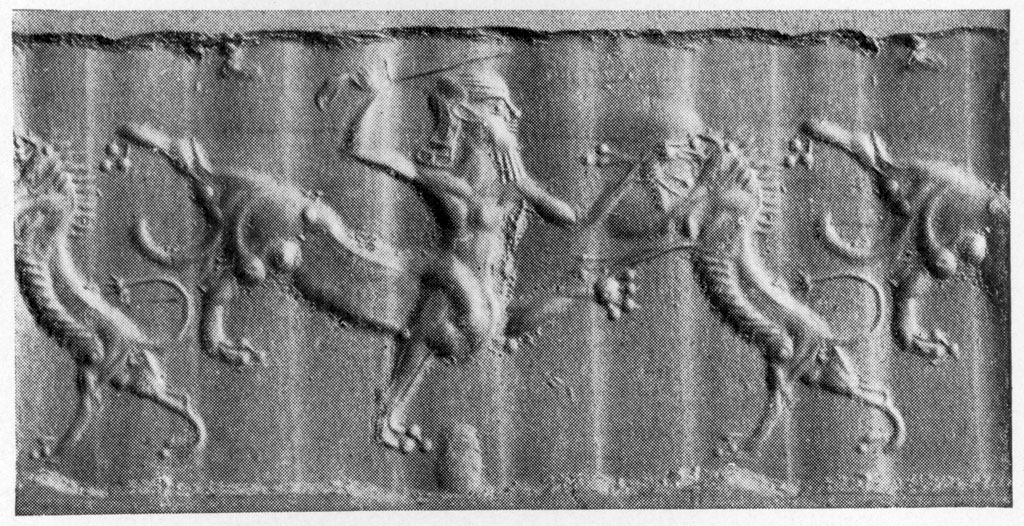Back when clay was the mass medium of choice, the scribes and officials of the day wanted to put their mark on stuff. So they had "seals" that they pushed into wet clay to make an impression, literally. Like signet rings and hot wax in a later day, these seals had a practical use. Some were just squares that were stamped into the clay, but a great many were cylinders that were rolled. These cylinders, carved expertly into hard rock or gemstone, were also talismans and jewelry; pieced down the center axis, you could string them and wear them like a necklace. For a lot more info on these, check out the Wikipedia article on cylinder seals.
For fifteen years plus, I've been looking for lion-centaurs -- that is "urmahlullu" -- on cylinder seals. You can read my old screeds here, here, here, and here I recently found two new ones (new to me), so I wanted to show them off. And what the heck, let's look at every ancient seal I have found with an urmahlullu.
Ancient Assyria

This is a new one, found in a 2019 masters thesis by Caroline LynnLee Carter at the University of Arizona, titled "THERIOMORPHIC FORMS: ANALYZING TERRESTRIAL ANIMAL-HUMAN HYBRIDS IN ANCIENT GREEK CULTURE AND RELIGION." She refers to it as "Impression of Cylinder Seal with Lahmu and Centaur. Provenance unknown, Middle Assyrian, mid-late 13th century, rose quartz. (Padget 2003, 131-133)." But it is clearly not a centaur -- the Ancient Assyrians had no centaur representations in their mythology of which I am aware. Anyway, that's a reference to a 2003 academic book: The Centaur's Smile, by J. Michael Padgett.

The first cylinder seal urmahlullu I ever saw, from "Mesopotamian Protective Spirits" by F. A. M. Wiggermann.

This is a non-cylindrical seal from the collection of a famous numismatist, with a poor provenance of "North Syrian," 1,000 BCE to 0 BCE.

This cylindrical seal was unearthed at Tell Asmar, Iraq.
Indus Valley

You can see all three of these
here, with more info at
my original screed. The lower right seal is new to me. These are three different representations of what is clearly the same mythological tiger-taur! She has two horns, a twig in her hair, and a long braid or length of hair in a hair net. They say they don't know much about religion as it was practiced in the ancient Indus Valley Civilization, but if this lovely lady is part of it, sign me up!